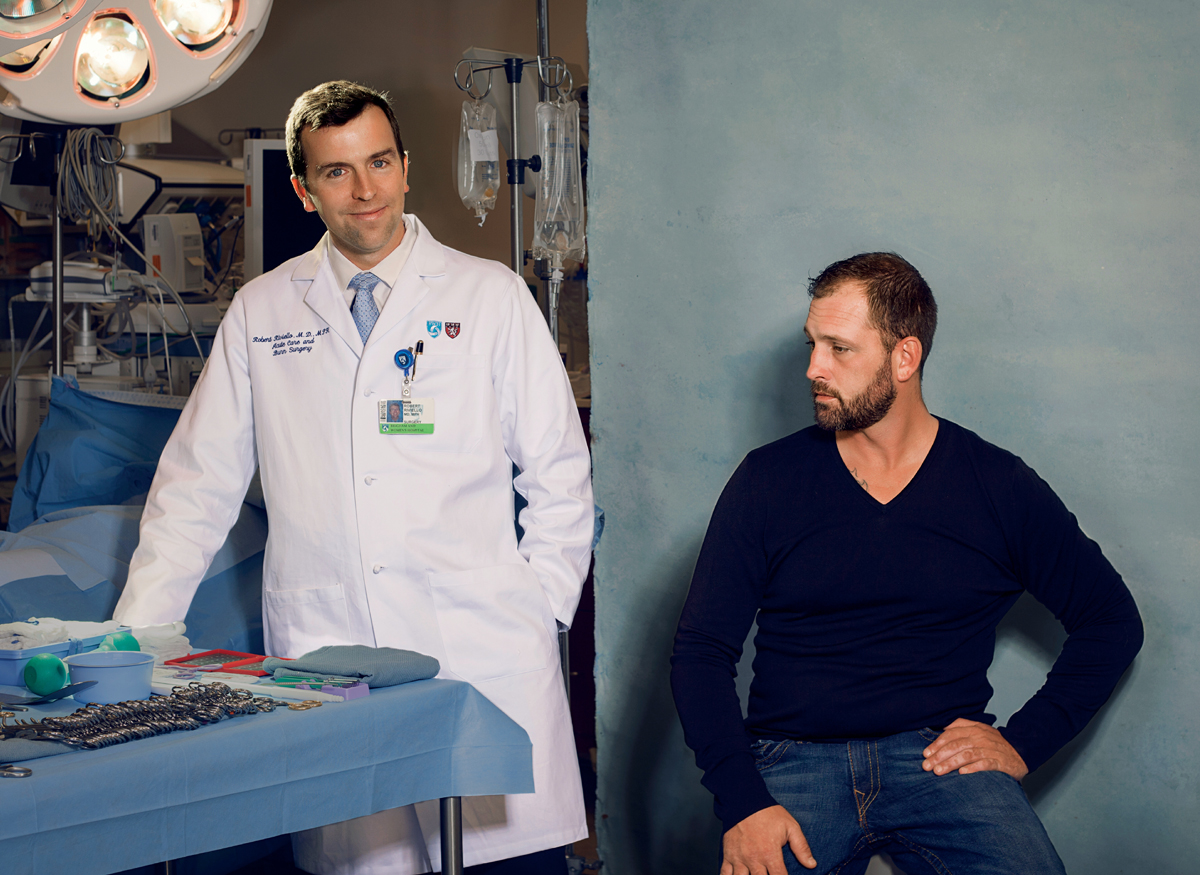Six Heroic Saves

Photograph by Henry Busby
The Doctor:
Robert Riviello
Trauma, burns, and surgical acute-care doctor, Brigham and Women’s Hospital
The Patient:
Jarrod Clowery
Carpenter and professional pool player, Stoneham
Jarrod Clowery admits that before April 15, he never would have thought that he and Robert Riviello had much in common. But the two quickly bonded over the doctor’s equipment. “Show me a surgeons’ tool set and I can show you its cousin in carpentry,” Clowery says. “They’re basically mechanics on the human body.”
And Clowery needed a lot of bodywork. He’d arrived at Brigham and Women’s covered in second-degree burns; his legs were full of pellets and nails, and he had “shrapnel sticking out all over the place,” Riviello says.
Clowery’s physical recovery was impressive, but Riviello has been even more taken with the way the patient has grappled with the changes in his life. He’s grown closer with his mother and son, and though he’s unable to work construction jobs due to his injuries, he’s now hoping to create a foundation that recognizes everyday heroes. “He’s put a lot of stock into what this means. It wasn’t just that he was injured and recovered. It was that he was injured, recovered, and transformed,” Riviello says.
“You got one second of the worst that humans can possibly do, followed by endless seconds of good,” Clowery says. “If my attitude is an inspiration, it’s because of the doctors and the first responders.”


